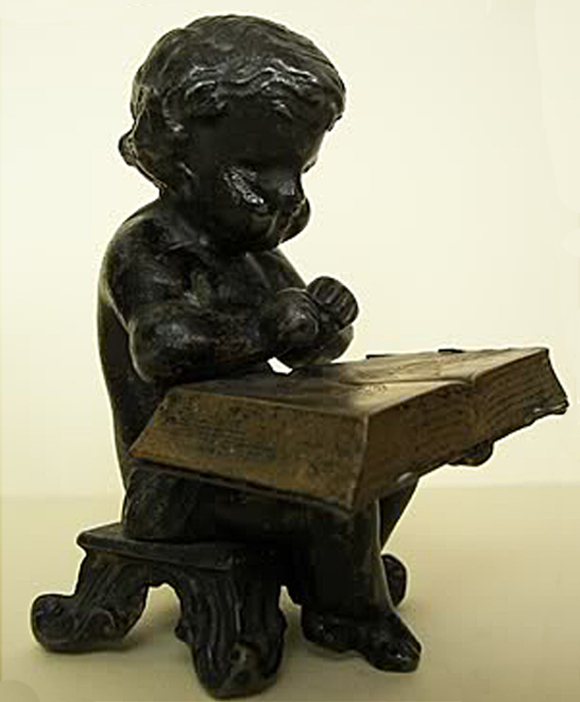Seated Cherub with Book

Needle Case (from an Internet website that no longer exists)

Design Representation
Design Details
Needle Case Type: |
Figural |
Patent/Registered to: |
J. M. Farnol – Birmingham |
Patent/Design Representation #: |
Ornamental Class1: Metal: #350165 (incorrectly listed on TNA’s website as 350166. Actual examination of the original records
indicates this is a typo and the correct number is 350165) |
Patent/Design Registration Date: |
May 27, 1880 |
Location of Patent/Design Registration: |
The National Archives (TNA) - Kew, UK |
Reference #: |
TNA Representation - BT 43/46/350165
TNA Register - BT 44/4/350165 |
Dimensions: |
Unknown |
Material: |
Brass |
Name Variations: |
Unmarked |
Other Variations: |
None |
Additional Photographs
None Available
Facts
Today the cherub is often interchangeable with cupid, both figures being depicted as a small chubby child with wings. Cherubs are most
often found on greeting cards, especially ones created for Valentine’s Day.

History

Although winged infant children were common in Ancient Greek and Roman sculpture, their popularity waned during the Middle Ages.
However, during the Renaissance they returned in force as an important feature in Christian art since the cherub or winged angel acts as a
messenger of God in Judeo-Christian religions. Two of the most famous cherubs are found in Raphael’s painting known as the Sistine
Madonna, which was commissioned by the Pope, in 1512. They are found at the very bottom of the painting leaning on the altar; pictured
above and below. Some believe these two cherubs were based on the children of the artist’s model who would come and watch as Raphael
painted their mother.

Miscellaneous
Cherubs were also popular during the Victorian period where they were found in architectural and garden sculpture as well as household
items such as wall paper, wall hangings, lamps, hand mirrors and jewelry. Today one can purchase these seated cherubs reading a book
as a garden ornament.











